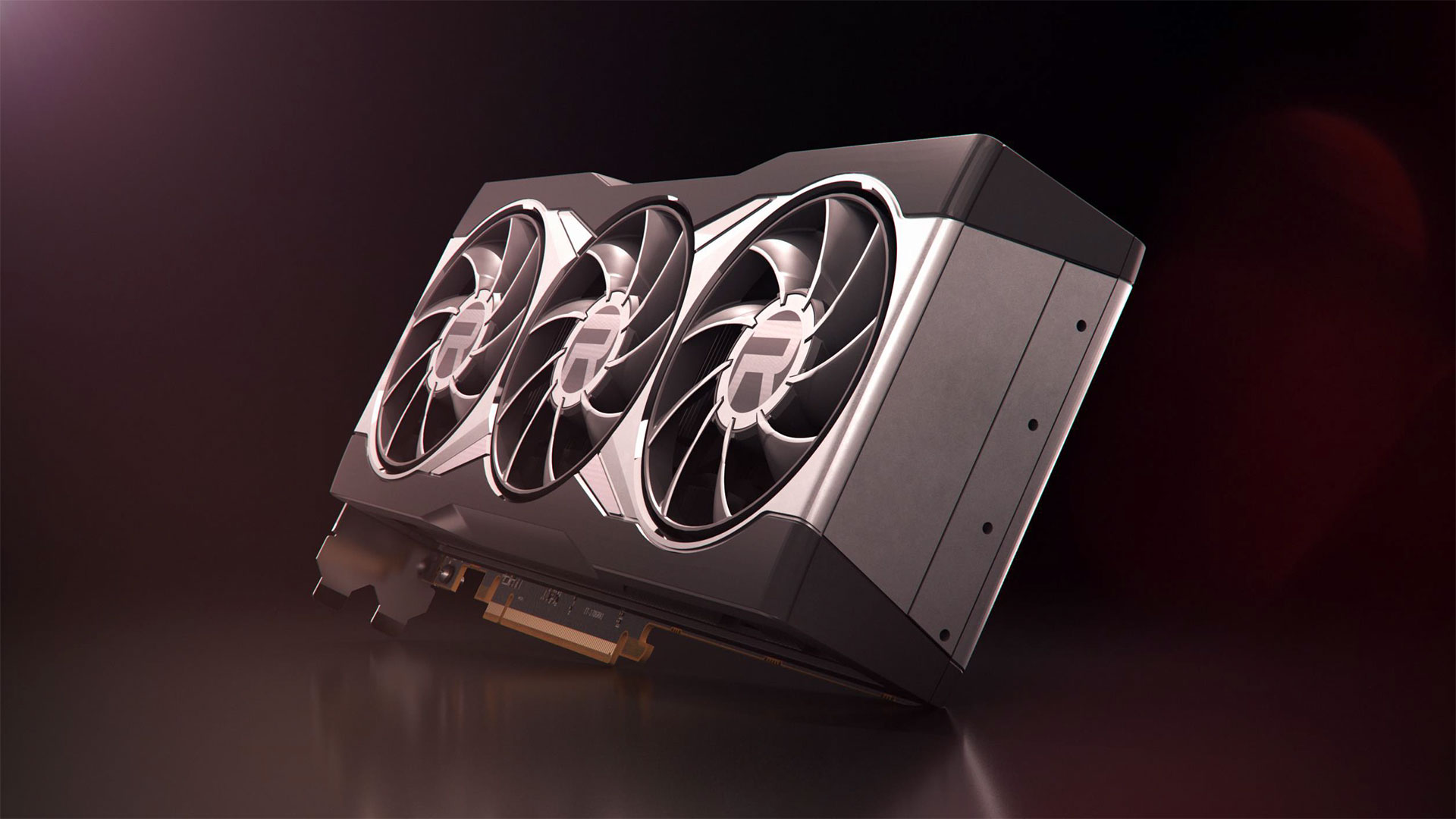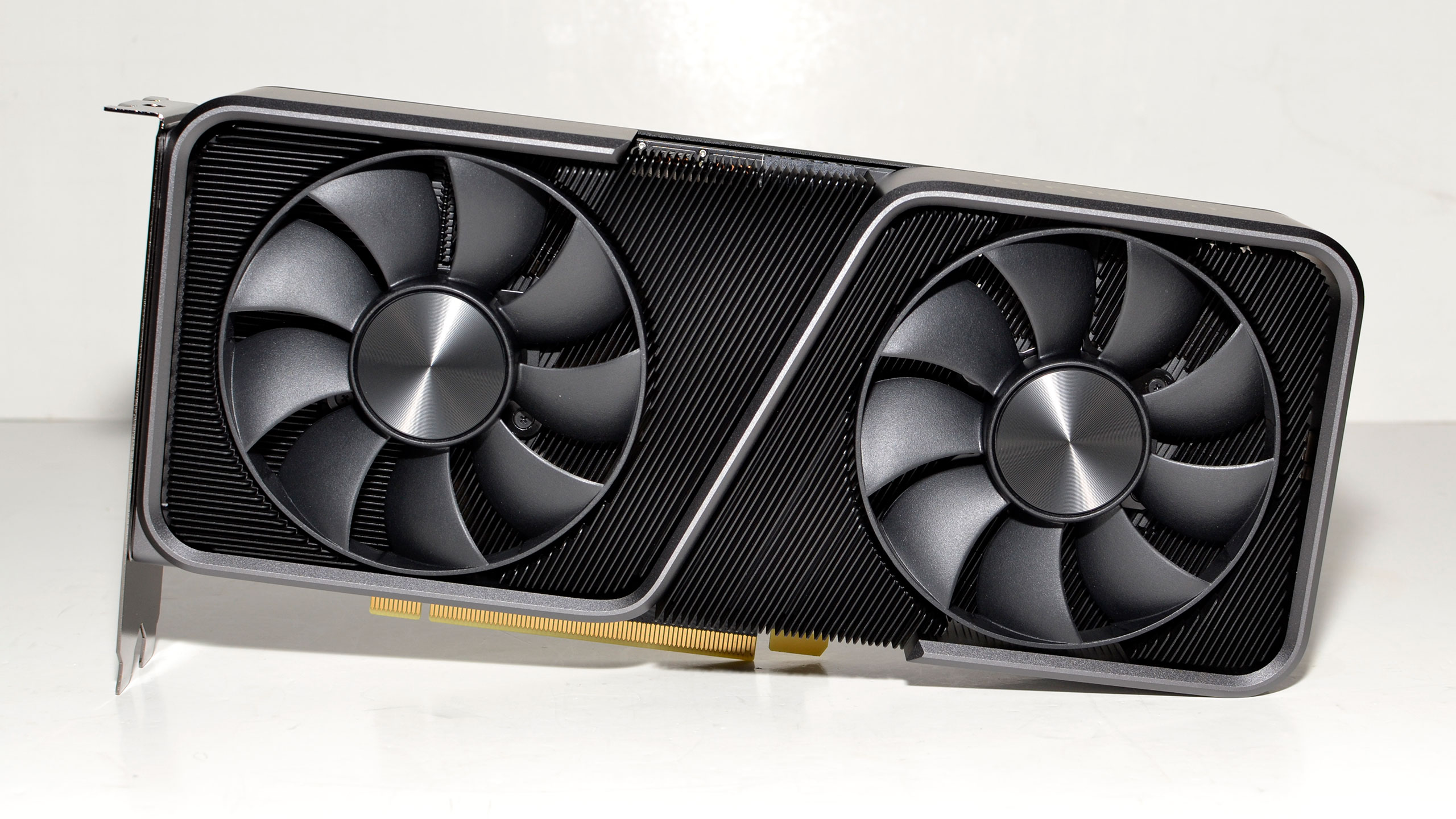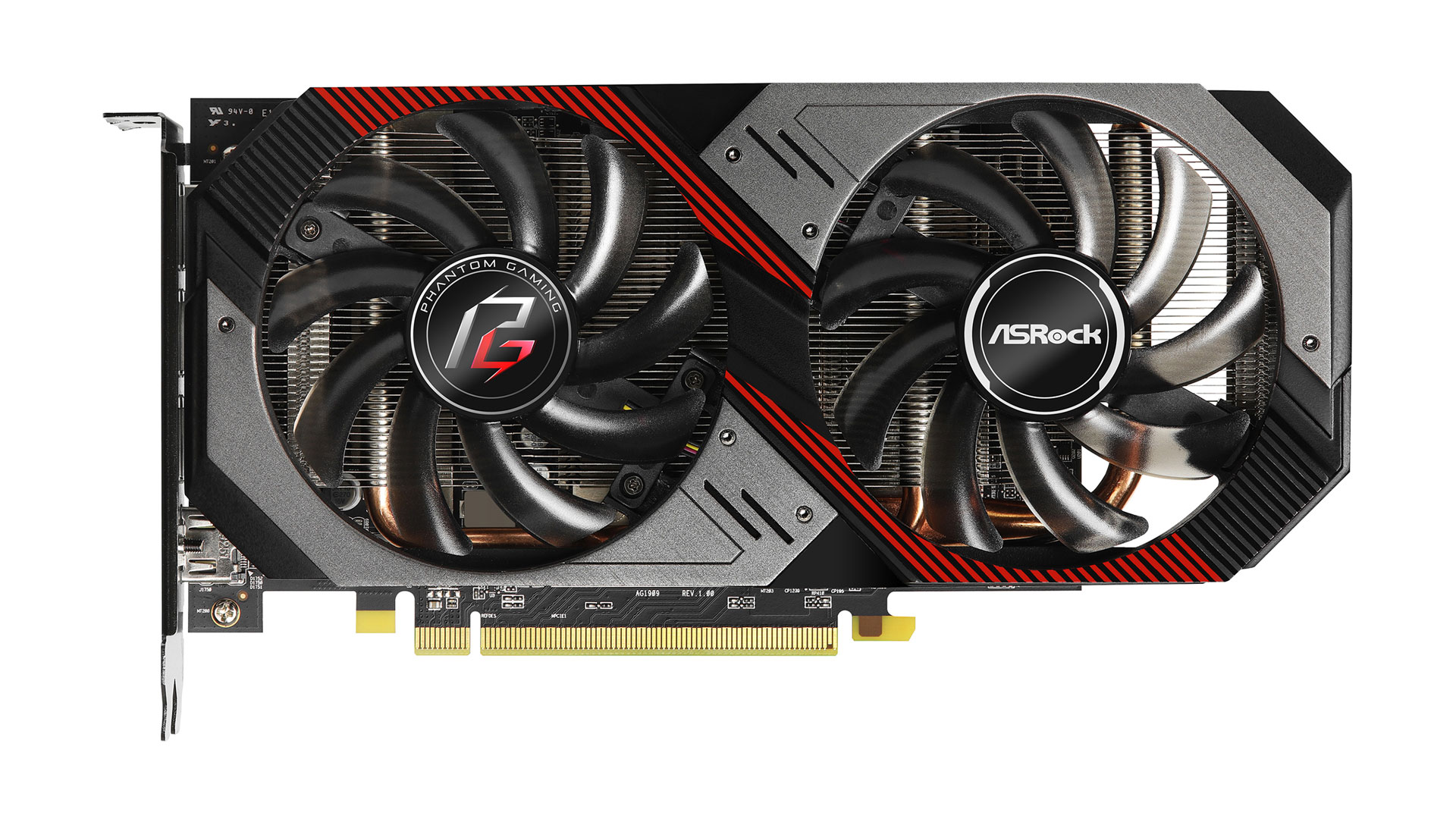It's Still a Terrible Time to Buy a Graphics Card
Nvidia's GPUs have soft-launched, the same goes for AMD's Big Navi, and everything is selling out faster than you can hit refresh.
Back in July, we wrote that it was a terrible time to buy a graphics card. The new Nvidia Ampere and AMD Big Navi GPUs were coming, the previous gen cards were selling out due to increased COVID-19 fueled demand, so you were effectively getting less GPU for more money. Five months later, guess what: It's still a terrible time to buy a graphics card! Sigh. This is especially true if you're looking at the top of our best graphics cards and GPU benchmarks hierarchy lists.
The good news is we now know a lot more about what the new GPUs can deliver. The bad news: Everything fast, shiny, and new is likely to continue selling out as quickly as it can be produced, probably well into the first quarter of 2021. Here's the short recap.
First, Nvidia has launched the GeForce RTX 3090, GeForce RTX 3080, and GeForce RTX 3070, and GeForce RTX 3060 Ti using its new Ampere architecture. The first two offer new levels of performance, though the price of the 3090 makes it a hard pass for anyone not doing professional work that can benefit from the 24GB VRAM, with gaming as a secondary option. The 3070 meanwhile basically delivers RTX 2080 Ti performance at less than half the price, and the 3060 Ti beats the old 2080 Super at a price that's over 40 percent lower. That's the theory, anyway, but finding any of these cards in stock is an exercise in frustration.
We don't know how many Ampere GPUs have been shipped and sold, other than Nvidia's claims that it prepared "similar" numbers of product for the Ampere launch as it had for the Turing launch back in 2018. Regardless, demand is much higher, so supply has been woefully insufficient. Even after delaying the RTX 3070 launch by two weeks to build up supply — and Newegg confirmed it had more 3070 cards than the previous two launches — the stock was gone within minutes (see our article on how to buy an RTX 3080, 3090 and 3070 for your best chance). The RTX 3060 Ti did no better.
AMD's Radeon RX 6900 XT, Radeon RX 6800 XT and RX 6800 GPUs haven't done any better, and in fact appear to be in even more limited supply than Ampere. Big Navi is competitive with Nvidia's top offerings, at least in non-ray tracing performance, but even the relatively lackluster (in terms of value and features) RX 6900 XT immediately sold out. It seems as though ray tracing performance isn't even a factor, as not only the new AMD GPUs but also the older RX 5000 series GPUs are sold out or only available at inflated prices.
Old vs. New GPUs: What's the Performance Like?
Every new generation of GPUs improves performance for any given price, and the next generation parts are no exception.
The GeForce RTX 3090 doesn't have a direct equivalent in the Turing generation, as it's a $1,500 GPU, but it's nearly 50 percent faster than the previous generation RTX 2080 Ti, and over 40 percent faster than the Titan RTX (at 4K ultra, which is what you really ought to be running if you're even thinking about buying such an expensive GPU). Plus, even if you wanted to buy a new RTX 2080 Ti for whatever reason, you're still looking at over $900 on eBay (used, without a warranty). We don't recommend that, because...
Get Tom's Hardware's best news and in-depth reviews, straight to your inbox.
The GeForce RTX 3080 isn't much slower than the 3090, and it's priced to move at $700. And move it has, for the past several months since the card first launched. We'd love to know how many have been sold, but our only real indication is that Danish retailer ProShop has only received a fraction of the RTX 30-series cards it's ordered. Anyway, RTX 3080 is over 30 percent faster than the RTX 2080 Ti, for at least $200 less money based on current used prices.
GeForce RTX 3070 is a bit of a larger step down, thanks to using GDDR6 instead of GDDR6X and a 256-bit instead of 320-bit memory interface. Still, it basically matches the RTX 2080 Ti performance for a starting price of $500. If you want one and sign up for all the out of stock notifications, you'll maybe be able to purchase it before the end of 2020, which still sounds like a better plan than buying a previous generation GPU at inflated prices. RTX 3060 Ti meanwhile is the new price to performance ratio king at $400 with RTX 2080 Super levels of performance. And it's just as sold out as the other cards.

AMD's Radeon RX 6900 XT, RX 6800 XT and RX 6800 have also launched. AMD claimed it worked with its partners to help alleviate bots nabbing all the inventory, but it didn't fool anyone: All three Big Navi chips sold out within minutes, and indications are the retailers had even fewer cards to go around than Ampere.
At the top, the Radeon RX 6900 XT is often faster than the RTX 3080, and even come close to the RTX 3090 at times, at least in rasterized games. It generally can't match either card in ray tracing performance, plus it's a $1,000 card — cheaper than the RTX 3090, but we already don't recommend spending that much money on a GPU for gaming purposes.
Radeon RX 6800 XT is the most desirable of the Big Navi chips, in our view, since it's basically everything you can get in the RX 6900 XT, minus about 5 percent performance, with a price of $650. Non-ray tracing (and non-DLSS) performance is competitive with RTX 3080 as well. Which means it's on-shelf life is going to be very fleeting most likely well into until 2021. Third party cards are even launching at much higher prices (like $900) and still selling out.
The Radeon RX 6800 is a bit of a larger drop in performance, sporting 17 percent fewer shader cores than the 6800 XT and with slightly lower clocks as well. Considering the price is $580, only $70 (11 percent) lower than the faster card, we'd opt for the XT model. Still, compared to the RTX 3070, AMD's card looks quite good. It has twice the memory, plus the big Infinity Cache, which is why AMD isn't even trying to go head-to-head with Nvidia on pricing.

And there are still more GPUs that may arrive in the few months ... except, if AMD and Nvidia can't even provide sufficient quantities of the parts they've already launched, what chance is there for the additional parts to stay in stock? Never you mind! There's a good chance we'll see GeForce RTX 3060 in early 2021, possibly even at CES, and an RTX 3050 Ti is probably coming as well.
Both will likely use the same GA106 GPU, but beyond that things get murky. The 3060 Ti still has 8GB of GDDR6 VRAM on a 256-bit memory bus. How does Nvidia trim that down to hit a lower price point? RTX 2060 has 6GB and already struggles at least in part because it only has a 192-bit interface with 6GB. Given costs and other factors, I can't imagine Nvidia doing 12GB on the 3060, which means 6GB may ride again. And if there's a 3050 Ti, there will inevitably be a 3050 as well. I'd be okay with an RTX 3050 that's basically a touch faster than the 2060, but gets the price down to only $200. But that might be a pipe dream.
The only real question in my mind isn't whether or not the RTX 3060, RTX 3050 Ti, and RTX 3050 exist in Nvidia's plans, but rather when they'll launch. RTX 3060 might end up with a January launch, and it will sell out at launch. How many GA106 wafers and chips did Nvidia order about six months back? That's the real question.
AMD also has lower tier not-so-Big Navi GPUs coming. Radeon RX 6700 XT, Radeon RX 6700, and Radeon RX 6500 XT are all likely to appear within the coming months. Considering the late launch date of Bigger Navi (aka, Navi 21), those GPUs weren't going to hit 2020. A January or at least first quarter 2021 launch seems more likely.
Why You Shouldn't Buy the Previous Gen GPUs

Okay, so you likely can't even find the new GPUs in stock. Why not just pick up a previous generation card on sale? It's a nice thought, but the problem is that most previous generation GPUs are overpriced now. Again, blame COVID-19 and gamers and office workers cooped up at home, but just about every GPU has seen prices increase over the past few months.
One of the best deals of early to mid 2020 was AMD's Radeon RX 5700, which saw prices as low as $280 (after rebates). It's about 10 percent slower than the RX 5700 XT, but that card was typically selling for $350 or more, so the tradeoff was worth taking. But now? The cheapest RX 5700 we can find in stock (not counting eBay) costs over $600. That's more than the cheapest RX 5700 XT, which still costs $470. Either way, you're paying more for a card that performs much worse than the latest GPUs.
Nvidia's RTX 20-series GPUs are, if anything, worse than AMD's Navi 10 parts. RTX 2060 Super starts at $600 right now, $200 more than the launch price! Let's get real: $500 for the RTX 3070 will give you 50-60 percent more performance, once the 3070 is regularly available for purchase. Alternatively, the RTX 3060 Ti easily beats the 2060 Super for (theoretically) $400. And RTX 2060 Super is still arguably the best of the worst high-end 20-series Nvidia cards right now.
RTX 2070 Super starts at $730, and 2080 Super cards are going for $800 and up on Newegg. It's sheer madness! Overspending on underperforming previous gen hardware is not what an enthusiast should do, pandemic or not. Those are all Newegg links, but if there are better prices around, we're not finding them.
Are There Any Graphics Cards Worth Buying?

Okay, so we just recommended against buying just about any of the existing / previous generation cards. But surely there must be something that's not a terrible buy, right? There was, last month, but these days even budget and midrange cards are overpriced. Let's start with the faster cards.
From AMD, the Radeon RX 5600 XT cards start at $320, which is actually an awesome deal compared to the Nvidia RTX 2060 cards that are now selling for $450 or more. Most other places seem to charge a bit more, or the parts are out of stock, so the RX 5600 XT is perhaps the best overall deal right now. And you'll probably have buyer's remorse in a few months when the newer cards catch up to demand. If at all possible, waiting for one of the new GPUs is a better plan.
The concern is that the new GPUs basically make these older generation cards feel more like they should cost $200-$225, not $275. $275 is what we'd suggest as a reasonable price for an RX 5700 XT, not the 5600 XT, considering its features and performance relative to the latest GPUs. What's more, 6GB VRAM on the 5600 XT and 2060 is definitely going to be a limiting factor in some games, forcing you to use the high setting instead of ultra quality on textures and shadows. Maybe that's a bit of a placebo, but there are definitely games (e.g., Red Dead Redemption 2) where the drop in texture quality is visible. 6GB felt okay a year ago, but now it's at the bottom of what we would suggest for a GPU that costs close to $300.
Stepping down to budget GPUs like the RX 5500 XT and GTX 1650 Super or GTX 1660 Super might seem feasible, but of those, only the 5500 XT is anywhere close to $200 ($220 right now). The RX 5500 XT 8GB is faster than the GTX 1650 Super and is really the only remotely viable budget option right now, but we still don't like the idea of paying more today than several months ago for a card that's only looking comparatively slower as time marches on.
None of the budget GPUs are going to be especially potent, and they're probably more of a stopgap unless you only play lighter games. 1080p at medium or high settings is usually going to do fine, though perhaps not 60 fps smooth. The good news is that we don't anticipate any substantially faster budget GPUs will show up for at least six months.
That Thing About Patience and Virtues...
While our headline isn't fully accurate in the sense that if you could buy one of the recently launched Nvidia RTX 30-series or AMD RX 6000-series GPUs, at the recommended starting prices, they would be great options. They're just not in stock, and trying to find one in stock could start to feel like a full-time job, creating stress and anxiety rather than letting you have some gaming fun. Instead of worrying about it and repeatedly checking all the online and local resellers, taking a break for a couple of months might be the wiser path.
Assuming you have a graphics card already, even if it's not fast enough to do everything you'd like, try to stick with it a bit longer. Unless it's really old, it's probably already close enough to the budget GPUs that they wouldn't be much of an upgrade anyway. Or, you could always roll the dice and look for a used card on eBay.
Really, though, mom was right and we need more patience. If you don't mind the regular searching for the GPU that you really want, keep it up. It could take a month or two, maybe even three or four if things are really bad, but at some point the next generation parts will be in stock in sufficient quantities. Hopefully that day comes before the RTX 40-series and RX 7000-series GPUs.

Jarred Walton is a senior editor at Tom's Hardware focusing on everything GPU. He has been working as a tech journalist since 2004, writing for AnandTech, Maximum PC, and PC Gamer. From the first S3 Virge '3D decelerators' to today's GPUs, Jarred keeps up with all the latest graphics trends and is the one to ask about game performance.
-
Loadedaxe Your absolutely right. I did a build for my granddaughter for her birthday and all I am waiting on is a GPU.Reply
While currently she doesn't play above 1080p, I would like to get her a new GPU so I do not have to fool with it for the next few years as she is getting older and talking 1440p, to which her mother is thinking of getting her a 1440p monitor for xmas.
I was going for the 3070, had all my auto notifies in at nvidia, new egg etc. Never received an email, and they are non existent and if you do find one they are tremendously overpriced.
Her Bday is in 6 days so waiting for RX6000 series is a bust. I can not even think about spending the prices they want for these older GPUs. Time is running out. I have to do something in the next day or so.
I am on the fence, but I think I am going to get her a 1660 Super for now. It should hold her over until this madness ends, if ever. I just feel like I am wasting $250 -
Gurg While originally thrilled by the new Nvidia GPUs, I've since cooled. The newest drivers have given my 2080S a shot in the arm and its been clocking to 2100-2115 mhz and doing just fine paired with my 28" 4K 60hz monitor. As I don't play "shooters" where higher frame rates may be beneficial, don't need to upgrade my 9600k, 3600mhz RAM, 280mm AIO cooling or 970+ M.2s I'm thinking more about buying a curved 32" 4K monitor @ 60hz if I can snag a great deal in Black Friday sales. Then exhibiting "patience" until 4070 or 4080 to upgrade GPU.Reply -
spentshells The 5600xt was 225at the start of the month I wonder if they just upped the price because they could and it wouldn't look to bad next to all the 500-1000 dollar cards.Reply -
Pytheus This is all very frustrating. I started to build a PC for my daughter's VR headset. I already bought most of the hardware and thought I should wait for the new graphics cards to see what they offered and hoped to have picked up one of the older cards at a discount. However I see stock of the older cards are low or gone and prices actually gone up!?! I've tried to snag a 3070 but Best Buy wouldn't ship to my address, I live in the US what addresses couldn't they ship to!?!? So I'm stuck with a PC with no graphics card considering the 5600xt as a temp solution, but I don't want to spend hundreds on a card I don't intend to keep. SighReply -
wr3zzz I have a suspicion that Asus and Gigabyte have been hoarding 3090 and 3080 chips in order to bin them for more expensive factory OC cards.Reply
Anecdotally in China, a huge market but no consumer protection like class action lawsuit for hoarding, Asus and Gigabyte have been selling only their lowest end cards and even those in very scant quantity comparing to their peer MSI and second tier brands who have been releasing cards to retail in more volume and across their entire product range. I also see hardly any mention online of people who are not influencer or reviewer having Asus Strix cards but many people having MSI Ventus and GamingX.
This is just my personal speculation but the pieces kinda fit. -
Shadowclash10 Reply6GB felt okay a year ago, but now it's at the bottom of what we would suggest for a GPU that costs close to $300.
Wait what? So what card is $300 and is 8GB of VRAM? All cards at <=$300 are <=6GB of VRAM. -
JarredWaltonGPU Reply
RX 5700 was routinely available for around $300 for most of this year -- it's only in the past maybe 2-3 months that prices have gone back up to $350 and above. But the point is, if you're buying a $300 or higher graphics card, you may find 6GB of memory ends up being a problem in some games. It's not a HUGE problem, but all things considered I'd rather have an 8GB card than a 6GB card (assuming the GPU is otherwise similar performance). Which means probably RX 6500 XT or RTX 3060 maybe? No ... not 3060 because I bet Nvidia does just 6GB again, so more like 3060 Ti.Shadowclash10 said:Wait what? So what card is $300 and is 8GB of VRAM? All cards at <=$300 are <=6GB of VRAM. -
ashburner I've had my EVGA 3080 FTW Ultra sitting in a box for the last two weeks. Just waiting to hopefully snag a 5950x in 6 days to go with everything else pre puchased. Thank you EVGA for having a fair and honest distribution of the Ampere cards!Reply -
junglist724 Reply
EVGA's notification queue was the only way I could find a card.Loadedaxe said:Your absolutely right. I did a build for my granddaughter for her birthday and all I am waiting on is a GPU.
While currently she doesn't play above 1080p, I would like to get her a new GPU so I do not have to fool with it for the next few years as she is getting older and talking 1440p, to which her mother is thinking of getting her a 1440p monitor for xmas.
I was going for the 3070, had all my auto notifies in at nvidia, new egg etc. Never received an email, and they are non existent and if you do find one they are tremendously overpriced.
Her Bday is in 6 days so waiting for RX6000 series is a bust. I can not even think about spending the prices they want for these older GPUs. Time is running out. I have to do something in the next day or so.
I am on the fence, but I think I am going to get her a 1660 Super for now. It should hold her over until this madness ends, if ever. I just feel like I am wasting $250 -
BogdanH I would prefer if media would stop using "recommended" prices in various comparisons. RTX3070 for $500 doesn't exist and never did. Hence, 3070, for example, is not $80 cheaper than RX 6800 at "recommended" price of $580.Reply
Here in Europe, latest nVidia cards are pure paper launch. And even there would be availability, I would never buy ANY nVidia card -prices are way overblown. In short, as an option, brand nVidia is non existent for me.
As casual gamer, I prefer AMD cards which used to be more wallet friendly. But that also changed with 6000 series. And I'm afraid, we can expect unreasonable prices here too -because some are ready to pay.
Being happy owner of RX5600XT, I can play most popular games at 60Hz, which is enough for me (at given price).
There's a difference between "wish" and "need" -answer for yourself and stay calm :)
